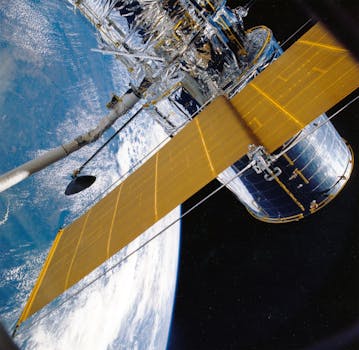
From Geostationary to Low Earth Orbit: The Evolution of Satellite Telecommunications in 2023
From Geostationary to Low Earth Orbit: The Evolution of Satellite Telecommunications in 2023 has revolutionized the way we communicate globally. Satellite telecommunications have undergone significant transformations over the years, and 2023 is no exception. The shift from geostationary to low earth orbit has opened up new avenues for communication, transforming the way we connect with each other.
Satellite telecommunications have been in existence for decades, with the first commercial satellite, Intelsat 1, launched in 1965. Since then, the industry has grown exponentially, with thousands of satellites orbiting the earth. The early days of satellite telecommunications were dominated by geostationary satellites, which offered a wide coverage area but had limitations in terms of latency and data transfer rates.
The Rise of Low Earth Orbit Satellites
In recent years, low earth orbit (LEO) satellites have emerged as a game-changer in the satellite telecommunications industry. LEO satellites orbit the earth at an altitude of around 160 to 2,000 kilometers, which is much lower than geostationary satellites. This lower altitude reduces latency and increases data transfer rates, making LEO satellites ideal for real-time communications and high-speed data transfer.
Companies like SpaceX, OneWeb, and Amazon’s Kuiper Systems are leading the charge in the development of LEO satellite constellations. These constellations consist of hundreds or even thousands of satellites that work together to provide global coverage. The benefits of LEO satellites are numerous, including lower latency, higher data transfer rates, and improved connectivity in remote and underserved areas.
Advantages of Low Earth Orbit Satellites
The advantages of LEO satellites over geostationary satellites are significant. For one, LEO satellites have lower latency, which is critical for real-time communications. The latency of LEO satellites is typically around 20-30 milliseconds, compared to 200-300 milliseconds for geostationary satellites. This lower latency makes LEO satellites ideal for applications such as video conferencing, online gaming, and virtual reality.
LEO satellites also offer higher data transfer rates than geostationary satellites. The data transfer rate of LEO satellites can reach up to 1 Gbps, compared to 100 Mbps for geostationary satellites. This higher data transfer rate makes LEO satellites suitable for applications such as high-speed internet, cloud computing, and big data analytics.
Challenges and Limitations
While LEO satellites offer many advantages, there are also challenges and limitations to consider. One of the main challenges is the high cost of launching and operating a LEO satellite constellation. The cost of launching a single LEO satellite can range from $50 million to $100 million, and the cost of operating a constellation of hundreds or thousands of satellites can be billions of dollars.
Another challenge is the issue of space debris. LEO satellites have a shorter lifespan than geostationary satellites, typically ranging from 5 to 10 years. When a LEO satellite reaches the end of its lifespan, it can become a piece of space debris, posing a collision risk to other satellites and spacecraft. To mitigate this risk, satellite operators must implement responsible de-orbiting practices, such as using propulsion systems to slowly de-orbit the satellite and burn up in the atmosphere.
Conclusion
In conclusion, the evolution of satellite telecommunications from geostationary to low earth orbit has transformed the way we communicate globally. LEO satellites offer many advantages, including lower latency, higher data transfer rates, and improved connectivity in remote and underserved areas. While there are challenges and limitations to consider, the benefits of LEO satellites make them an attractive option for a wide range of applications, from real-time communications to high-speed data transfer.






